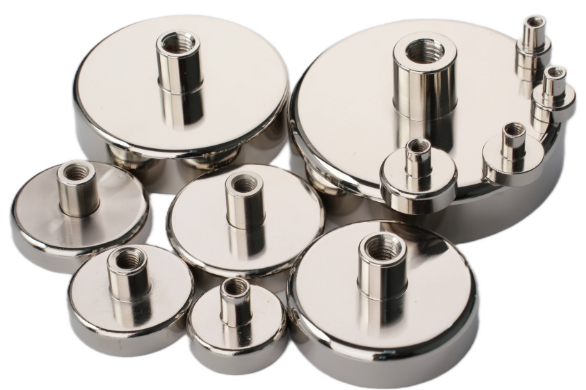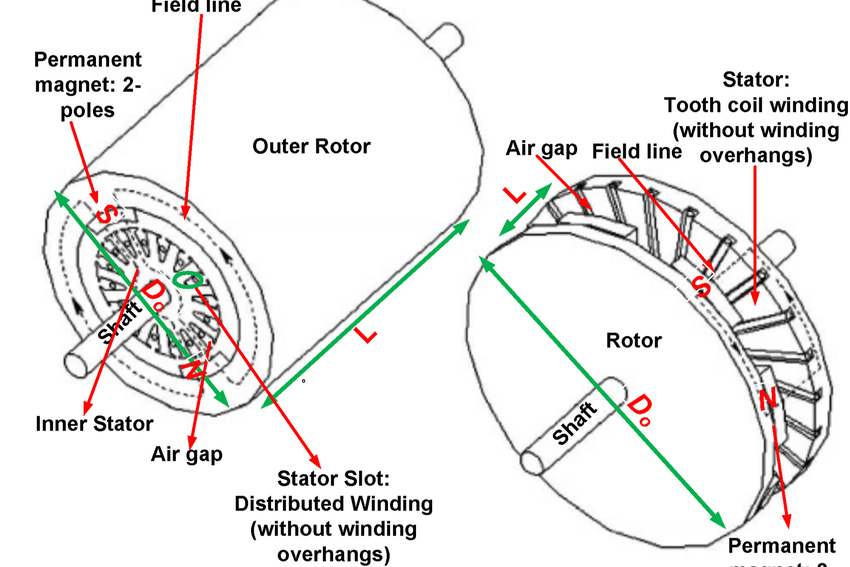Magnets in Speakers
The core component responsible for producing sound in audio equipment is the speaker. It is a kind of transducer device that converts the electric signal into an acoustic signal. The performance of the speaker has a great influence on the sound quality, and the magnet in the speaker largely determines its performance. So in this article, let's take a look at the magnets in speakers.
 Magnets in Speakers
Magnets in Speakers
The picture above shows several key components that make up the speaker. When an alternating current passes through the coil of the speaker, a corresponding magnetic field is generated in the coil. This magnetic field interacts with the magnetic field generated by the magnet on the speaker, and this force causes the coil to vibrate with the audio current in the permanent magnet magnetic field on the speaker. The diaphragm and the coil are connected. When the coil and the speaker diaphragm vibrate together, pushing the surrounding air to vibrate, the speaker generates sound from this, which is the principle of the speaker's sound production.
The Influence of Magnet Performance on the Sound Output Quality of Speakers
In the case of the same magnet volume and the same coil, the performance of the magnet has a direct impact on the sound quality of the speaker:
- The greater the magnetic flux density (magnetic induction) B of the magnet, the stronger the thrust acting on the sound film.
- The greater the magnetic flux density (magnetic induction) B, the higher the relative power and the higher the sensitivity of the speaker.
How to Choose a Speaker Magnet?
The speaker magnets on the market mainly include AlNiCo magnets, ferrite magnets, and NdFeB magnets: Alnico magnet is the earliest magnet used in speakers. The disadvantage is that the power is small, hard, and brittle, and the processing is very inconvenient. In addition, cobalt resources are scarce, and the price of AlNiCo magnets is relatively high. From the perspective of cost performance, AlNiCo magnets are rarely used for speaker magnets. Ferrite magnets have relatively low magnetic properties and require a certain volume to meet the driving force of the speaker, so they are generally used in larger audio speakers. The advantages of ferrite magnets are that they are cheap and cost-effective; the disadvantages are that they are larger in size and smaller in power. NdFeB magnets have far superior magnetic properties than AlNiCo magnets and ferrite magnets and are currently the most used magnets on speakers, especially high-end speakers. Their advantages are their small size and high power under the same magnetic flux while their disadvantages are that they contain rare earth elements, so their price is higher.
Conclusion
Thank you for reading our article and we hope it can help you to have a better understanding of the magnets in speakers. If you want to learn more about magnets, we would like to advise you to visit Stanford Magnets for more information. As a leading magnet supplier across the world, Stanford Magnets has been involved in R&D, manufacturing, and sales of magnets since the 1990s. It provides customers with high-quality permanent magnets like neodymium magnets, SmCo magnets, AlNiCo magnets, and ferrite magnets (ceramic magnets) at a very competitive price.















